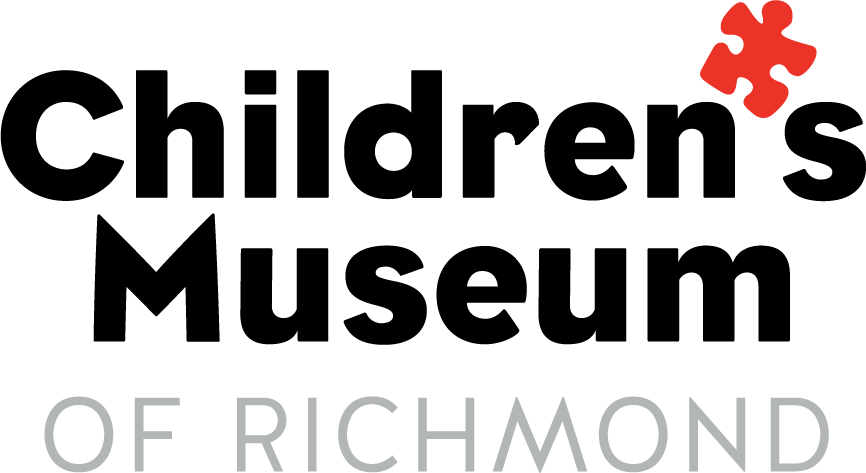Please submit a request using the online form below and we will contact you. For special questions, contact education@childrensmuseumofrichmond.org or call 804-474-7012
All field trip programs have been updated to reflect current Virginia Early Learning and Development Standards (ELDS) and/or Standards of Learning (SOL) with guidance by our new Teacher Advisory Group. If you are interested in serving on our Advisory team, contact Krista Dawson, Director of Education at kdawson@cmorva.org.
NOTE: All Preschool programs have elements supporting VA ELDS Approaches to Play & Learning; Social/Emotion Development and Communication, Language & Literacy but are not explicitly identified below.
To print out a PDF of our Education Programs, click here.
Toddler
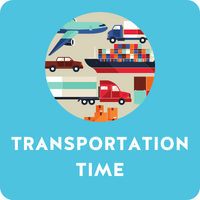
Transportation Time
Our first program made just for toddlers (1-3 years)! Curious thinkers will discover ways that we move around our world by land, water, and air. This hands-on program is designed to excite toddlers’ minds while teachers and caregivers link to the Five RVA Basics. Beep, Beep, let’s go!
Toddlers will color and take home an airplane with CMoR’s mascot Seymour as the pilot, complete with a movement chant to try at home.
TRANSPORTATION TIME PROGRAM ALIGNMENT
VA EARLY LEARNING & DEVELOPMENT STANDARDS
- CD1. Science: The Natural and Physical World (CD1.1, 1.2)
- CD2. Social Science: People, Community, and Culture (CD2.1)
- CD3. Mathematics (CD3.3, 3.5)
- CD4. Fine Arts (CD4.4)
Pre-K
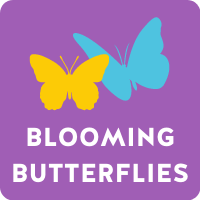
Blooming Butterflies
Butterflies come to life through dramatic play and interesting models. Students will celebrate the anatomy and life cycles of these wonderful creatures though literacy and creative engagement. Additionally, students will get a flash lesson on symmetry and hone their skills on a gigantic butterfly model.
Students will leave the program with a pair of wearable butterfly wings showcasing symmetry
BLOOMING BUTTERFLIES PROGRAM ALIGNMENT
VA EARLY LEARNING & DEVELOPMENT STANDARDS
- Approaches to Play and Learning APL1
- Communication, Language and Literacy Development CLLD1.2
- Health and Physical Development HPD1.1
- Cognitive Development CD1.1, CD3.4, CD4.1
VA STANDARDS OF LEARNING
- Science: K.1 (c, e); K.6 (a, b); K.7 (a); K.10 (a, b, c, d), 1.5 (b, c), 2.4 (a)

Celebrations Around the World
Students will learn about celebrations that take place around the world and even in their own neighborhood. We will identify the four main components that comprise a celebration: light, food, decorations, and games. Students will learn about children and their families who celebrate the winter holidays of Eid, Diwali, Hanukkah, Kwanzaa, and Lunar New Year, and interact with cultural props!
Students will leave the program with a Celebrations Around the World craft booklet.
CELEBRATIONS PROGRAM ALIGNMENT
VA EARLY LEARNING & DEVELOPMENT STANDARDS
- Cognitive Development CD2.1, CD2.2, CD2.3
VA STANDARDS OF LEARNING
- History: K.Skills (a, e); K.2; K.4 (a), 1.Skills (a, e), 1.2; 2.Skills (a, e); 2.3, 3.Skills (a, e); 3.1 (a)
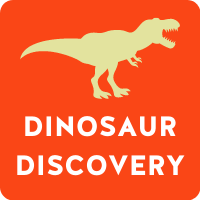
Dinosaur Discovery
Prehistoric play brings to life the wild world of DINOSAURS. Students will learn that although dinosaurs lived long ago and are extinct, there is still much to explore as they identify key features of some favorite dinosaurs. Students will step into the shoes of paleontologists through engaging activities such as “fossil” digs and themed play!
Students will leave the program with their very own clay “fossil.”
DINOSAUR PROGRAM ALIGNMENT
VA EARLY LEARNING & DEVELOPMENT STANDARDS
- Approaches to Play and Learning APL1
- Communication, Language and Literacy Development CLLD1.2
- Health and Physical Development HPD1.1, HPD3.2
- Cognitive Development CD2.3, CD3.4, CD3.5
VA STANDARDS OF LEARNING
- History: K.Skills (a, c); K.4 (c)
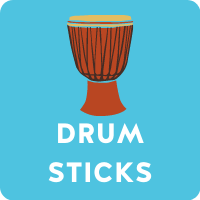
Drumsticks
Join us as we bring to life The Leopard’s Drum, a West African folktale. Through dramatic play, students learn to identify patterns in literature, art, and music! They are able to create visual and musical patterns of their own, while deepening their understanding through interactive storytelling using their created character props!
Students will leave the program with a piece of art that resembles an animal from the story.
DRUMSTICKS PROGRAM ALIGNMENT
VA EARLY LEARNING & DEVELOPMENT STANDARDS
- Approaches to Play and Learning APL3.1
- Social and Emotional Development SED2.1
- Communication, Language and Literacy Development CLLD2.2
- Cognitive Development CD3.4
VA STANDARDS OF LEARNING
- Mathematics: K.PFA.1 (a, b, c), 1.PFA.1 (a, b, c, d)
- English, Reading, Literacy: K.2 (a, b, c, d), 1.2 (a, b, c, d)
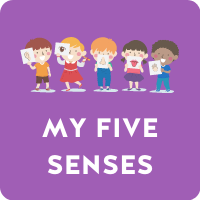
My Five Senses
Mystery items will have students guessing and giggling in this program about our amazing senses! Students will match physical parts and descriptive words to the five senses. Through hands-on exploration, students will deepen their awareness of how our senses help us understand the world.
Students will leave the program with a “Magnifying (Your Senses) Glass” craft.
FIVE SENSES PROGRAM ALIGNMENT
VA EARLY LEARNING & DEVELOPMENT STANDARDS
- Health and Physical Development HPD1.1
- Cognitive Development CD1.1, CD1.2, CD3.4, CD3.5
VA STANDARDS OF LEARNING
- Science: K.3 (a, b, c, d); K.5 (a, b)
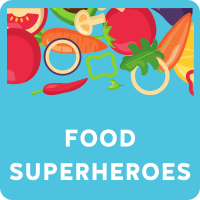
Food Superheroes
How are fruits and vegetables like superheroes? Find out in our special nutrition-focused program. Students will learn about the many benefits of eating healthy foods by taking part in a “Food Superhero training course.” and engaging in activity stations.
Each student will leave with their own personalized “Food Superhero.”
FOOD SUPERHEROES PROGRAM ALIGNMENT
VA EARLY LEARNING & DEVELOPMENT STANDARDS
- Showing creativity and imagination APL2.1
- Taking care of daily health needs HPD4.1
- Eating with healthy habits HPD4.3
- Exploring and expressing ideas through movement CD4.1
VA STANDARDS OF LEARNING
- Physical Education: K.5 (a, b, c), 1.5 (a, b, c, d)

What Is A Scientist?
What does a scientist really do? Students will learn the answer to this question by taking part in this very hands-on, station-focused program. As students have fun predicting, observing, sorting, and recording at different experiment tables, they are not only learning the scientific method, but also recognizing that anyone can be a scientist if they have enough curiosity and willingness to explore.
Students get to take home their unique observational drawings that were created in the program.
WHAT IS A SCIENTIST? PROGRAM ALIGNMENT
VA EARLY LEARNING & DEVELOPMENT STANDARDS
- Communication, Language & Literacy Development: CLLD1.2, CLLD3.1
- Health & Physical Development: HPD1.1
- Cognitive Development: Science CD1, CD2.2, CD2.3;
- Mathematics: CD3.4, CD3.5
VA STANDARDS OF LEARNING
- Science: K.1 (a, b, c, d, e, f), 1.1 (a, b, c, d, e, f)
Kindergarten

Blooming Butterflies
Butterflies come to life through dramatic play and interesting models. Students will celebrate the anatomy and life cycles of these wonderful creatures though literacy and creative engagement. Additionally, students will get a flash lesson on symmetry and hone their skills on a gigantic butterfly model.
Students will leave the program with a pair of wearable butterfly wings showcasing symmetry
BLOOMING BUTTERFLIES PROGRAM ALIGNMENT
VA EARLY LEARNING & DEVELOPMENT STANDARDS
- Approaches to Play and Learning APL1
- Communication, Language and Literacy Development CLLD1.2
- Health and Physical Development HPD1.1
- Cognitive Development CD1.1, CD3.4, CD4.1
VA STANDARDS OF LEARNING
- Science: K.1 (c, e); K.6 (a, b); K.7 (a); K.10 (a, b, c, d), 1.5 (b, c), 2.4 (a)

Celebrations Around The World
Students will learn about celebrations that take place around the world and even in their own neighborhood. We will identify the four main components that comprise a celebration: light, food, decorations, and games. Students will learn about children and their families who celebrate the winter holidays of Eid, Diwali, Hanukkah, Kwanzaa, and Lunar New Year, and interact with cultural props!
Students will leave the program with a Celebrations Around the World craft booklet.
CELEBRATIONS PROGRAM ALIGNMENT
VA EARLY LEARNING & DEVELOPMENT STANDARDS
- Cognitive Development CD2.1, CD2.2, CD2.3
VA STANDARDS OF LEARNING
- History: K.Skills (a, e); K.2; K.4 (a), 1.Skills (a, e), 1.2; 2.Skills (a, e); 2.3, 3.Skills (a, e); 3.1 (a)

Dinosaur Discovery
Prehistoric play brings to life the wild world of DINOSAURS. Students will learn that although dinosaurs lived long ago and are extinct, there is still much to explore as they identify key features of some favorite dinosaurs. Students will step into the shoes of paleontologists through engaging activities such as “fossil” digs and themed play!
Students will leave the program with their very own clay “fossil.”
DINOSAUR PROGRAM ALIGNMENT
VA EARLY LEARNING & DEVELOPMENT STANDARDS
- Approaches to Play and Learning APL1
- Communication, Language and Literacy Development CLLD1.2
- Health and Physical Development HPD1.1, HPD3.2
- Cognitive Development CD2.3, CD3.4, CD3.5
VA STANDARDS OF LEARNING
- History: K.Skills (a, c); K.4 (c)

Drumsticks
Join us as we bring to life The Leopard’s Drum, a West African folktale. Through dramatic play, students learn to identify patterns in literature, art, and music! They are able to create visual and musical patterns of their own, while deepening their understanding through interactive storytelling using their created character props!
Students will leave the program with a piece of art that resembles an animal from the story.
DRUMSTICKS PROGRAM ALIGNMENT
VA EARLY LEARNING & DEVELOPMENT STANDARDS
- Approaches to Play and Learning APL3.1
- Social and Emotional Development SED2.1
- Communication, Language and Literacy Development CLLD2.2
- Cognitive Development CD3.4
VA STANDARDS OF LEARNING
- Mathematics: K.PFA.1 (a, b, c), 1.PFA.1 (a, b, c, d)
- English, Reading, Literacy: K.2 (a, b, c, d), 1.2 (a, b, c, d)

Food Superheroes
How are fruits and vegetables like superheroes? Find out in our special nutrition-focused program. Students will learn about the many benefits of eating healthy foods by taking part in a “Food Superhero training course.” and engaging in activity stations.
Each student will leave with their own personalized “Food Superhero.”
FOOD SUPERHEROES PROGRAM ALIGNMENT
VA EARLY LEARNING & DEVELOPMENT STANDARDS
- Showing creativity and imagination APL2.1
- Taking care of daily health needs HPD4.1
- Eating with healthy habits HPD4.3
- Exploring and expressing ideas through movement CD4.1
VA STANDARDS OF LEARNING
- Physical Education: K.5 (a, b, c), 1.5 (a, b, c, d)
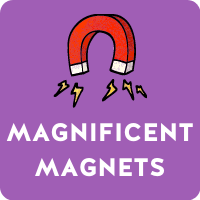
Magnificent Magnets
Learn why magnets are so magnificent! Students discover what makes magnets push and pull, and why some objects are magnetic and others are not. They will identify magnets from everyday life and work through an array of hands-on experiments and activities to gain further understanding.
Students will leave the program with a unique puzzle piece magnet.
MAGNETS PROGRAM ALIGNMENT
VA STANDARDS OF LEARNING
- Science: K.2 (a, b, c); 2.2 (a, b, c)

My Five Senses
Mystery items will have students guessing and giggling in this program about our amazing senses! Students will match physical parts and descriptive words to the five senses. Through hands-on exploration, students will deepen their awareness of how our senses help us understand the world.
Students will leave the program with a “Magnifying (Your Senses) Glass” craft.
FIVE SENSES PROGRAM ALIGNMENT
VA EARLY LEARNING & DEVELOPMENT STANDARDS
- Health and Physical Development HPD1.1
- Cognitive Development CD1.1, CD1.2, CD3.4, CD3.5
VA STANDARDS OF LEARNING
- Science: K.3 (a, b, c, d); K.5 (a, b)
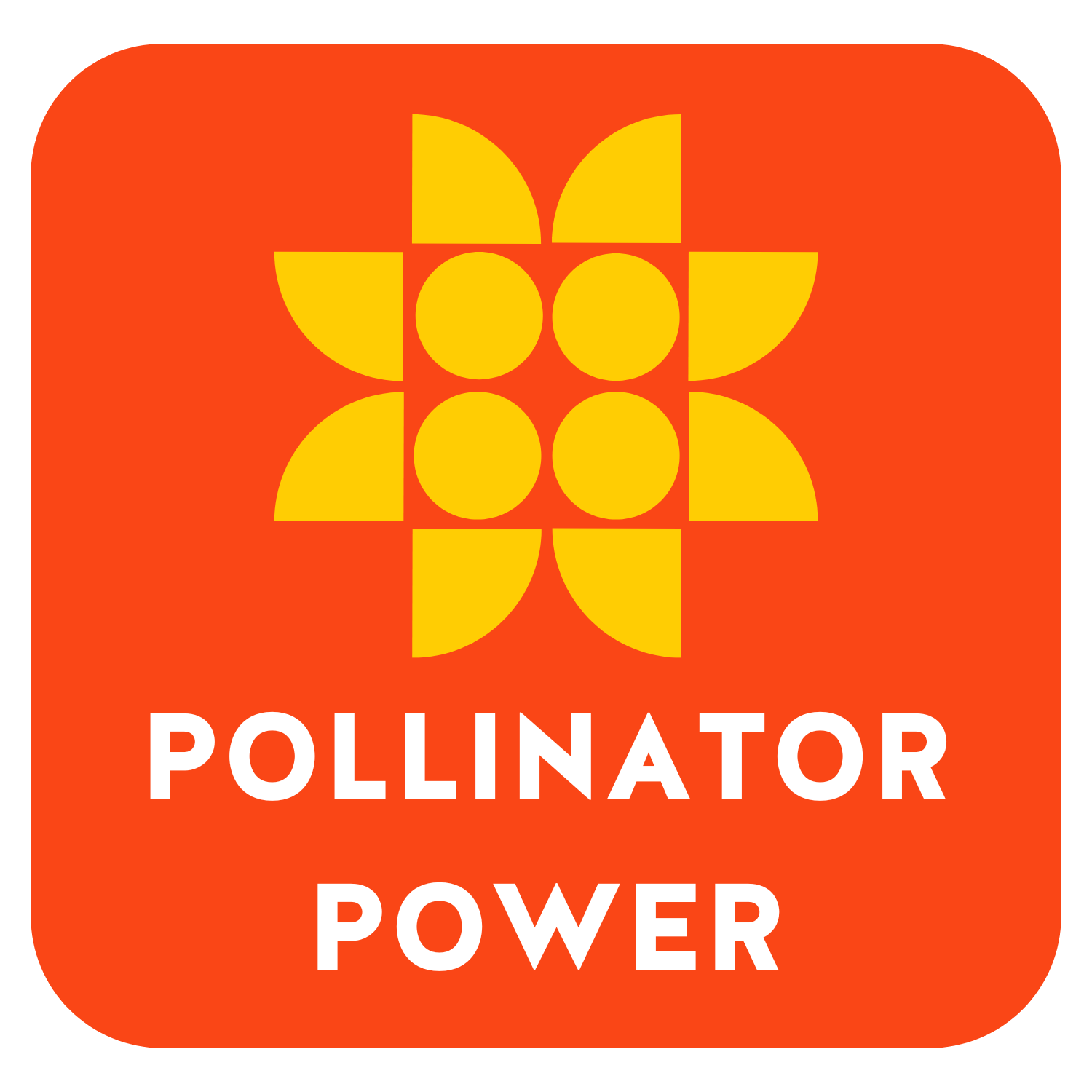
Pollinator Power
Did you know that without pollinators, we wouldn’t have many of our favorite foods—like chocolate or fresh berries? In this program, students will dive into the fascinating world of pollinators, discovering the challenges they face and explore how we can all help each other. Through a fun, hands-on, LEGO design challenge, students will have the chance to create innovative solutions to help these vital creatures thrive. Along the way, they’ll learn about the incredible interconnections between all living things and develop a sense of empathy and responsibility for our planet.
Students get a Wildflower Seed Packet to plant at home to help pollinators thrive!
POLLINATOR POWER PROGRAM ALIGNMENT
VA STANDARDS OF LEARNING
- Science: K.7 (a), 1.5 (a), 1.8 (a, b), 2.5 (a, b), 2.8 (a, b, c), 3.8 (a)
- Reading: K.1, k.2, k.12, 1.1, 1.2, 1.6, 2.1, 2.2, 2.12, 3.1, 3.10
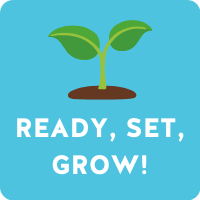
Ready, Set, Grow!
In Ready-Set-Grow, students will celebrate the fantastic world of plants. Come act out the life cycle of a plant, discuss the importance of plants in our life, and get your hands dirty as we explore how nature works.
Students will leave the program with their very own planted seed.
READY, SET, GROW! PROGRAM ALIGNMENT
VA EARLY LEARNING & DEVELOPMENT STANDARDS
- Health and Physical Development HPD1.1
- Cognitive Development CD1.1, CD1.2, CD3.4, CD3.5
VA STANDARDS OF LEARNING
- Science: K.6 (a, b); K.7 (a, b, c); K.10 (b), 1.4 (a, b, c), 2.4 (b)
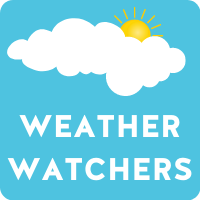
Weather Watchers
Watch how weather really affects life on Earth. Students will learn how to predict the weather by identifying natural patterns like the four seasons and cloud formations. Students will be shown different weather instruments that meteorologists use in understanding the weather.
Children will make a unique “Weather Viewer” that can be taken home to continue the learning with their families.
WEATHER WATCHERS PROGRAM ALIGNMENT
VA STANDARDS OF LEARNING
- Science: K.9 (a, b), 1.7 (a, b, c), 2.6 (a, b, c), 2.7 (a)

What Is A Scientist?
What does a scientist really do? Students will learn the answer to this question by taking part in this very hands-on, station-focused program. As students have fun predicting, observing, sorting, and recording at different experiment tables, they are not only learning the scientific method, but also recognizing that anyone can be a scientist if they have enough curiosity and willingness to explore.
Students get to take home their unique observational drawings that were created in the program.
WHAT IS A SCIENTIST? PROGRAM ALIGNMENT
VA EARLY LEARNING & DEVELOPMENT STANDARDS
- Communication, Language & Literacy Development: CLLD1.2, CLLD3.1
- Health & Physical Development: HPD1.1
- Cognitive Development: Science CD1, CD2.2, CD2.3;
- Mathematics: CD3.4, CD3.5
VA STANDARDS OF LEARNING
- Science: K.1 (a, b, c, d, e, f), 1.1 (a, b, c, d, e, f)
1st Grade
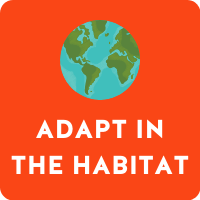
Adapt In The Habitat
Cool creatures assist students in learning about an animal’s five basic needs and components of a habitat, along with the forces that may cause a habitat to change. Students will explore animal body coverings and physical traits. They will also learn about physical and behavioral adaptations such as hibernation, migration, camouflage, and varied vision.
Students will leave the program with an imaginative drawing reinforcing knowledge of habitats and adaptations.
ADAPT PROGRAM ALIGNMENT
VA STANDARDS OF LEARNING
- Science: K.7 (a), 1.5 (a, b, c), 2.1 (a), 2.5 (a, b, c), 2.8 (b), 3.1 (a), 3.4 (b), 3.5 (a, b)

Blooming Butterflies
Butterflies come to life through dramatic play and interesting models. Students will celebrate the anatomy and life cycles of these wonderful creatures though literacy and creative engagement. Additionally, students will get a flash lesson on symmetry and hone their skills on a gigantic butterfly model.
Students will leave the program with a pair of wearable butterfly wings showcasing symmetry
BLOOMING BUTTERFLIES PROGRAM ALIGNMENT
VA EARLY LEARNING & DEVELOPMENT STANDARDS
- Approaches to Play and Learning APL1
- Communication, Language and Literacy Development CLLD1.2
- Health and Physical Development HPD1.1
- Cognitive Development CD1.1, CD3.4, CD4.1
VA STANDARDS OF LEARNING
Science: K.1 (c, e); K.6 (a, b); K.7 (a); K.10 (a, b, c, d), 1.5 (b, c), 2.4 (a)

Celebrations Around The World
Students will learn about celebrations that take place around the world and even in their own neighborhood. We will identify the four main components that comprise a celebration: light, food, decorations, and games. Students will learn about children and their families who celebrate the winter holidays of Eid, Diwali, Hanukkah, Kwanzaa, and Lunar New Year, and interact with cultural props!
Students will leave the program with a Celebrations Around the World craft booklet.
CELEBRATIONS PROGRAM ALIGNMENT
VA EARLY LEARNING & DEVELOPMENT STANDARDS
- Cognitive Development CD2.1, CD2.2, CD2.3
VA STANDARDS OF LEARNING
- History: K.Skills (a, e); K.2; K.4 (a), 1.Skills (a, e), 1.2; 2.Skills (a, e); 2.3, 3.Skills (a, e); 3.1 (a)

Magnificent Magnets
Learn why magnets are so magnificent! Students discover what makes magnets push and pull, and why some objects are magnetic and others are not. They will identify magnets from everyday life and work through an array of hands-on experiments and activities to gain further understanding.
Students will leave the program with a unique puzzle piece magnet.
MAGNETS PROGRAM ALIGNMENT
VA STANDARDS OF LEARNING
- Science: K.2 (a, b, c), 2.2 (a, b, c)

Pollinator Power
Did you know that without pollinators, we wouldn’t have many of our favorite foods—like chocolate or fresh berries? In this program, students will dive into the fascinating world of pollinators, discovering the challenges they face and explore how we can all help each other. Through a fun, hands-on, LEGO design challenge, students will have the chance to create innovative solutions to help these vital creatures thrive. Along the way, they’ll learn about the incredible interconnections between all living things and develop a sense of empathy and responsibility for our planet.
Students get a Wildflower Seed Packet to plant at home to help pollinators thrive!
POLLINATOR POWER PROGRAM ALIGNMENT
VA STANDARDS OF LEARNING
- Science: K.7 (a), 1.5 (a), 1.8 (a, b), 2.5 (a, b), 2.8 (a, b, c), 3.8 (a)
- Reading: K.1, k.2, k.12, 1.1, 1.2, 1.6, 2.1, 2.2, 2.12, 3.1, 3.10

Ready, Set, Grow!
In Ready-Set-Grow, students will celebrate the fantastic world of plants. Come act out the life cycle of a plant, discuss the importance of plants in our life, and get your hands dirty as we explore how nature works.
Students will leave the program with their very own planted seed.
READY, SET, GROW! PROGRAM ALIGNMENT
VA EARLY LEARNING & DEVELOPMENT STANDARDS
- Health and Physical Development HPD1.1
- Cognitive Development CD1.1, CD1.2, CD3.4, CD3.5
VA STANDARDS OF LEARNING
- Science: K.6 (a, b); K.7 (a, b, c); K.10 (b), 1.4 (a, b, c), 2.4 (b)
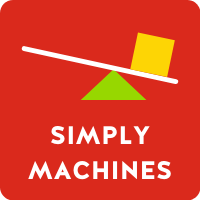
Simply Machines
Students gain a working knowledge of six simple machines in Simply Machines! Through hands-on exploration, students will be challenged to identify the simple machines in an “I SPY” game, experiment to discover how machines make work easier, and test out ways to combine simple machines through construction play.
Students will leave the program with DIY machine kit.
SIMPLY MACHINES PROGRAM ALIGNMENT
VA STANDARDS OF LEARNING
- Science: K.1; K.2 (a, b, c), 1.1 (a, b, e), 2.1 (a, b, c, d, e), 2.2 (a, c), 3.1 (a, b), 3.2 (a, b, c, d)

Weather Watchers
Watch how weather really affects life on Earth. Students will learn how to predict the weather by identifying natural patterns like the four seasons and cloud formations. Students will be shown different weather instruments that meteorologists use in understanding the weather.
Children will make a unique “Weather Viewer” that can be taken home to continue the learning with their families.
WEATHER WATCHERS PROGRAM ALIGNMENT
VA STANDARDS OF LEARNING
- Science: K.9 (a, b), 1.7 (a, b, c), 2.6 (a, b, c), 2.7 (a)
2nd Grade

Adapt In The Habitat
Cool creatures assist students in learning about an animal’s five basic needs and components of a habitat, along with the forces that may cause a habitat to change. Students will explore animal body coverings and physical traits. They will also learn about physical and behavioral adaptations such as hibernation, migration, camouflage, and varied vision.
Students will leave the program with an imaginative drawing reinforcing knowledge of habitats and adaptations.
ADAPT PROGRAM ALIGNMENT
VA STANDARDS OF LEARNING
- Science: K.7 (a), 1.5 (a, b, c), 2.1 (a), 2.5 (a, b, c), 2.8 (b), 3.1 (a), 3.4 (b), 3.5 (a, b)

Blooming Butterflies
Butterflies come to life through dramatic play and interesting models. Students will celebrate the anatomy and life cycles of these wonderful creatures though literacy and creative engagement. Additionally, students will get a flash lesson on symmetry and hone their skills on a gigantic butterfly model.
Students will leave the program with a pair of wearable butterfly wings showcasing symmetry
BLOOMING BUTTERFLIES PROGRAM ALIGNMENT
VA EARLY LEARNING & DEVELOPMENT STANDARDS
- Approaches to Play and Learning APL1
- Communication, Language and Literacy Development CLLD1.2
- Health and Physical Development HPD1.1
- Cognitive Development CD1.1, CD3.4, CD4.1
VA STANDARDS OF LEARNING
Science: K.1 (c, e); K.6 (a, b); K.7 (a); K.10 (a, b, c, d), 1.5 (b, c), 2.4 (a)

Celebrations Around The World
Students will learn about celebrations that take place around the world and even in their own neighborhood. We will identify the four main components that comprise a celebration: light, food, decorations, and games. Students will learn about children and their families who celebrate the winter holidays of Eid, Diwali, Hanukkah, Kwanzaa, and Lunar New Year, and interact with cultural props!
Students will leave the program with a Celebrations Around the World craft booklet.
CELEBRATIONS PROGRAM ALIGNMENT
VA EARLY LEARNING & DEVELOPMENT STANDARDS
- Cognitive Development CD2.1, CD2.2, CD2.3
VA STANDARDS OF LEARNING
- History: K.Skills (a, e); K.2; K.4 (a), 1.Skills (a, e), 1.2; 2.Skills (a, e); 2.3, 3.Skills (a, e); 3.1 (a)

Magnificent Magnets
Learn why magnets are so magnificent! Students discover what makes magnets push and pull, and why some objects are magnetic and others are not. They will identify magnets from everyday life and work through an array of hands-on experiments and activities to gain further understanding.
Students will leave the program with a unique puzzle piece magnet.
MAGNETS PROGRAM ALIGNMENT
VA STANDARDS OF LEARNING
- Science: K.2 (a, b, c), 2.2 (a, b, c)

Pollinator Power
Did you know that without pollinators, we wouldn’t have many of our favorite foods—like chocolate or fresh berries? In this program, students will dive into the fascinating world of pollinators, discovering the challenges they face and explore how we can all help each other. Through a fun, hands-on, LEGO design challenge, students will have the chance to create innovative solutions to help these vital creatures thrive. Along the way, they’ll learn about the incredible interconnections between all living things and develop a sense of empathy and responsibility for our planet.
Students get a Wildflower Seed Packet to plant at home to help pollinators thrive!
POLLINATOR POWER PROGRAM ALIGNMENT
VA STANDARDS OF LEARNING
- Science: K.7 (a), 1.5 (a), 1.8 (a, b), 2.5 (a, b), 2.8 (a, b, c), 3.8 (a)
- Reading: K.1, k.2, k.12, 1.1, 1.2, 1.6, 2.1, 2.2, 2.12, 3.1, 3.10

Simply Machines
Students gain a working knowledge of six simple machines in Simply Machines! Through hands-on exploration, students will be challenged to identify the simple machines in an “I SPY” game, experiment to discover how machines make work easier, and test out ways to combine simple machines through construction play.
Students will leave the program with DIY machine kit.
SIMPLY MACHINES PROGRAM ALIGNMENT
VA STANDARDS OF LEARNING
- Science: K.1; K.2 (a, b, c), 1.1 (a, b, e), 2.1 (a, b, c, d, e), 2.2 (a, c), 3.1 (a, b), 3.2 (a, b, c, d)

Weather Watchers
Watch how weather really affects life on Earth. Students will learn how to predict the weather by identifying natural patterns like the four seasons and cloud formations. Students will be shown different weather instruments that meteorologists use in understanding the weather.
Children will make a unique “Weather Viewer” that can be taken home to continue the learning with their families.
WEATHER WATCHERS PROGRAM ALIGNMENT
VA STANDARDS OF LEARNING
- Science: K.9 (a, b), 1.7 (a, b, c), 2.6 (a, b, c), 2.7 (a)
3rd Grade

Adapt In The Habitat
Cool creatures assist students in learning about an animal’s five basic needs and components of a habitat, along with the forces that may cause a habitat to change. Students will explore animal body coverings and physical traits. They will also learn about physical and behavioral adaptations such as hibernation, migration, camouflage, and varied vision.
Students will leave the program with an imaginative drawing reinforcing knowledge of habitats and adaptations.
ADAPT PROGRAM ALIGNMENT
VA STANDARDS OF LEARNING
- Science: K.7 (a), 1.5 (a, b, c), 2.1 (a), 2.5 (a, b, c), 2.8 (b), 3.1 (a), 3.4 (b), 3.5 (a, b)

Celebrations Around The World
Students will learn about celebrations that take place around the world and even in their own neighborhood. We will identify the four main components that comprise a celebration: light, food, decorations, and games. Students will learn about children and their families who celebrate the winter holidays of Eid, Diwali, Hanukkah, Kwanzaa, and Lunar New Year, and interact with cultural props!
Students will leave the program with a Celebrations Around the World craft booklet.
CELEBRATIONS PROGRAM ALIGNMENT
VA EARLY LEARNING & DEVELOPMENT STANDARDS
- Cognitive Development CD2.1, CD2.2, CD2.3
VA STANDARDS OF LEARNING
- History: K.Skills (a, e); K.2; K.4 (a), 1.Skills (a, e), 1.2; 2.Skills (a, e); 2.3, 3.Skills (a, e); 3.1 (a)

Pollinator Power
Did you know that without pollinators, we wouldn’t have many of our favorite foods—like chocolate or fresh berries? In this program, students will dive into the fascinating world of pollinators, discovering the challenges they face and explore how we can all help each other. Through a fun, hands-on, LEGO design challenge, students will have the chance to create innovative solutions to help these vital creatures thrive. Along the way, they’ll learn about the incredible interconnections between all living things and develop a sense of empathy and responsibility for our planet.
Students get a Wildflower Seed Packet to plant at home to help pollinators thrive!
POLLINATOR POWER PROGRAM ALIGNMENT
VA STANDARDS OF LEARNING
- Science: K.7 (a), 1.5 (a), 1.8 (a, b), 2.5 (a, b), 2.8 (a, b, c), 3.8 (a)
- Reading: K.1, k.2, k.12, 1.1, 1.2, 1.6, 2.1, 2.2, 2.12, 3.1, 3.10

Simply Machines
Students gain a working knowledge of six simple machines in Simply Machines! Through hands-on exploration, students will be challenged to identify the simple machines in an “I SPY” game, experiment to discover how machines make work easier, and test out ways to combine simple machines through construction play.
Students will leave the program with DIY machine kit.
SIMPLY MACHINES PROGRAM ALIGNMENT
VA STANDARDS OF LEARNING
- Science: K.1; K.2 (a, b, c), 1.1 (a, b, e), 2.1 (a, b, c, d, e), 2.2 (a, c), 3.1 (a, b), 3.2 (a, b, c, d)

Weather Watchers
Watch how weather really affects life on Earth. Students will learn how to predict the weather by identifying natural patterns like the four seasons and cloud formations. Students will be shown different weather instruments that meteorologists use in understanding the weather.
Children will make a unique “Weather Viewer” that can be taken home to continue the learning with their families.
WEATHER WATCHERS PROGRAM ALIGNMENT
VA STANDARDS OF LEARNING
- Science: K.9 (a, b), 1.7 (a, b, c), 2.6 (a, b, c), 2.7 (a)
